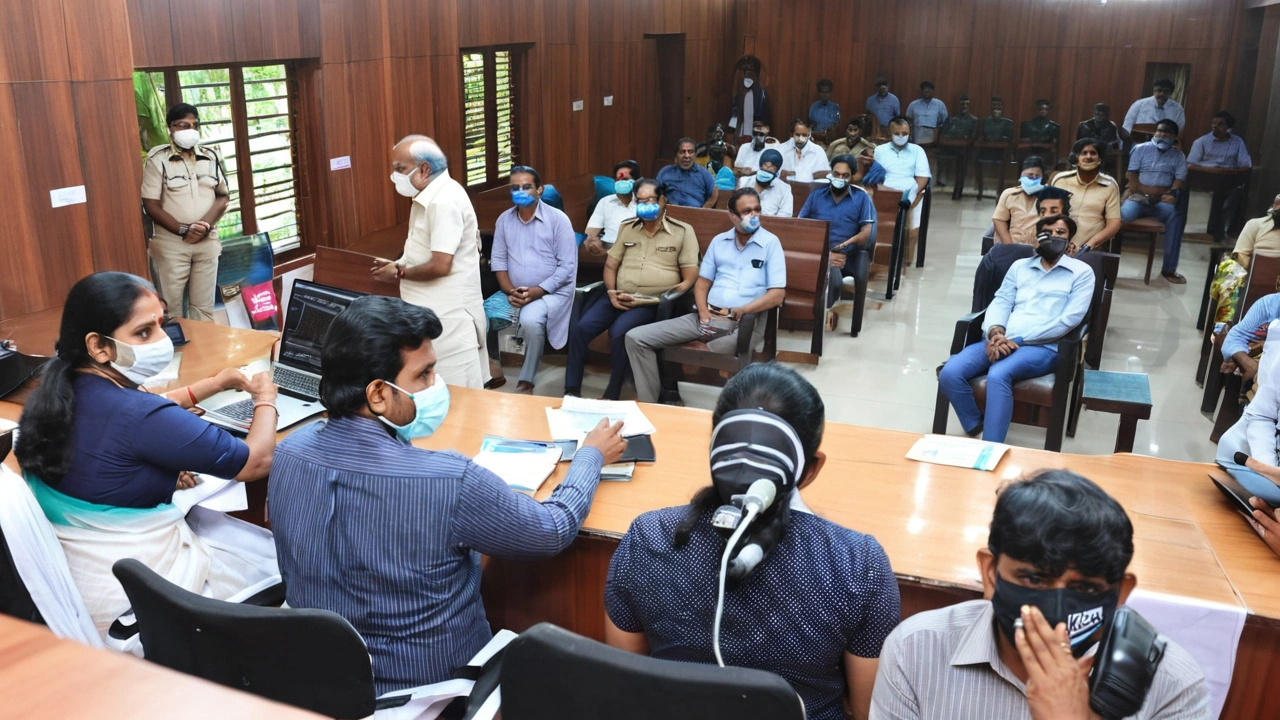Kerala On High Alert After 14-Year-Old's Death from Nipah Virus
22 Jul, 2024Nipah Virus Death in Kerala Sparks Concern
The Indian state of Kerala is in the grip of anxiety and vigilance after the tragic death of a 14-year-old boy from the Nipah virus. The fatal incident has led health authorities to issue immediate warnings and initiate stringent measures to prevent further spread. The boy, hailing from Pandikkad, was diagnosed quickly, but the rapid progression of the disease left medical professionals unable to save him.
High-Risk Contacts Identified and Isolated
Following the diagnosis, Kerala health officials identified 60 individuals who were in close contact with the boy and are now categorized as high-risk. These individuals are undergoing stringent isolation protocols and regular testing to monitor for any signs of the infection. Authorities are sparing no effort in ensuring these individuals are adequately quarantined to prevent any potential secondary transmissions.
Implemented Precautionary Measures
In a bid to curb the spread, the government has urged the public to adhere to recommended safety measures, such as wearing masks, especially in crowded spaces, and avoiding unnecessary visits to hospitals. Healthcare facilities are on high alert, reinforcing infection control practices, and preparing for any possible surge in cases. Educational campaigns are underway to inform the public about the virus's symptoms and transmission modes, urging anyone exhibiting signs of illness to seek medical help immediately.

Understanding the Nipah Virus
The Nipah virus is a zoonotic disease, which means it can be transmitted from animals to humans. It is commonly spread through fruit bats, also known as flying foxes, and pigs. Human infections can occur through direct contact with infected animals, contaminated food, or close contact with infected individuals. Given its mode of transmission, simple acts such as consuming contaminated fruits or handling sick animals can lead to outbreaks, making public awareness crucial.
WHO's Classification and the Threat Level
The World Health Organization has classified the Nipah virus as a critical pathogen due to its potential to cause epidemic outbreaks. This classification underscores the need for global attention and preparedness, as the virus not only poses a health risk but also an economic one, especially in regions dependent on animal farming and agriculture.
Historical Context and Previous Outbreaks
Kerala has been grappling with the Nipah virus since 2018, with several fatal outbreaks accounting for numerous deaths. The region’s warm, tropical climate, coupled with rapid urbanization and habitat encroachment, creates an ideal environment for the virus to thrive and spread. Previous outbreaks have demonstrated the virus's deadly potential and the importance of swift public health responses.

Factors Contributing to the Spread
Experts believe that the destruction of animal habitats, particularly those of fruit bats, plays a substantial role in the spread of the Nipah virus. As natural habitats diminish, animals come into closer contact with human communities, facilitating the transmission of zoonotic diseases. This scenario highlights the urgent need for environmental conservation as a critical aspect of public health strategies.
State Government's Strategic Response
The Kerala government is actively working on a comprehensive strategy to mitigate the threat posed by the Nipah virus. This plan involves enhancing surveillance systems, improving diagnostic capacities, and ensuring rapid response capabilities. Collaboration with national and international health agencies is also a part of this strategy, aiming for a cohesive and effective approach to disease management.
Moreover, investment in research and development is pivotal. Funding for studies focusing on the Nipah virus's behavior, transmission patterns, and potential treatments is being prioritized. The aim is to not only tackle the current outbreak but to be better prepared for any future incidents.
Engaging the Community in Disease Prevention
Community engagement is another essential component of the containment strategy. Local populations are being educated about the importance of hygiene, proper food handling practices, and the early reporting of symptoms. Grassroots movements and local health workers are at the forefront, spreading knowledge and ensuring compliance with preventive measures.

Global Implications and the Way Forward
The case of the 14-year-old boy in Kerala is a stark reminder of the unpredictable nature of infectious diseases and the interconnectedness of global health. As nations globally continue to battle various health crises, from pandemics to other zoonotic diseases, the importance of a unified, informed, and proactive approach cannot be overstated.
In conclusion, while the loss of a young life is always heartbreaking, it also serves as a catalyst for change and readiness. Governments, health organizations, and communities must collectively rise to the challenge, employing every available resource to combat the Nipah virus and safeguard public health.

 by
by